The oil-rich nation of Qatar; the perfect location for Volkswagen to launch the XL1 concept—a diesel-electric hybrid with a combined fuel consumption figure of just 0.9l/100km and a CO2 rating of only 24g/km.
The XL1 is the latest iteration of the “1 litre” car first premiered by Ferdinand Piech back in 2002. In 2009 we also saw the Volkswagen L1. Where the XL1 differs from those two is in its seating arrangement. The earlier concepts featured inline seating for two, whereas the XL1 uses a more traditional layout to seat two abreast.
Powering the XL1 is a mighty 35kW 800cc two cylinder TDI and a fearsome 20kW E-motor. The total range of the XL1 is around 550km, that’s pretty good from a 10 litre tank. In electric only mode the XL1 has a more modest range of 35km.
The use of carbon fibre and other advanced construction methods helps keep the kerb weight of the XL1 to 795kg. Performance is not blistering, but it’s not too shabby, either, with 100km/h able to be reached in 11.9 seconds. Top speed is limited at 160km/h.
More after the break, including pics and a basic press release. A more detailed release is available for download as well.
Vision becomes reality – Volkswagen’s “Formula XL1â€:
- Volkswagen XL1 prototype consumes just 0.9 l/100 km!
- XL1’s world debut at the Qatar Motor Show (26–29 January)
- Two-seat XL1 brings vision of the 1-litre car close to production maturity
Wolfsburg / Doha, 25 January 2011 – Future mobility is one of the most stimulating topics of our time. The key question here: Just how much could the energy consumption of cars be reduced if all the stops were pulled out for efficiency? There is now an answer to this question, and Volkswagen is delivering it in the form of the new XL1. Combined fuel consumption: 0.9 l/100 km. No other hybrid car powered by an electric motor / internal combustion engine combination is more fuel efficient. The prototype will be unveiled in a world debut at the Qatar Motor Show (26–29 January).
To the point
Conceptually, the XL1 represents the third evolutionary stage of Volkswagen’s 1-litre car strategy. When the new millennium was ushered in, Prof. Dr. Ferdinand Piëch, who is today Chairman of the Supervisory Board of Volkswagen AG, formulated the visionary goal of bringing to the market a production car that was practical for everyday use with a fuel consumption of 1.0 litre per 100 km. In the new XL1, Volkswagen is demonstrating that this goal is now within reach.
The new Volkswagen XL1 attains a CO2 emissions value of 24 g/km, thanks to a combination of lightweight construction (monocoque and add-on parts made of carbon fibre), very low aerodynamic drag (Cd 0.186) and a plug-in hybrid system – consisting of a two cylinder TDI engine (35 kW / 48 PS), E-motor (20 kW / 27 PS), 7-speed dual-clutch transmission (DSG) and lithium-ion battery. The results: with fuel consumption of 0.9 l/100 km, the new Volkswagen XL1 only emits 24 g/km CO2. Since it is designed as a plug-in hybrid, the XL1 prototype can also be driven for up to 35 kilometres in pure electric mode, i.e. with zero emissions at point of use. The battery can be charged from a conventional household electric outlet. Naturally, battery regeneration is also employed to recover energy while slowing down and store as much of it as possible in the battery for re-use. In this case, the electric motor acts as an electric generator.
Despite the very high levels of efficiency, developers were able to design a body layout that offers greater everyday practicality, incorporating side by side seating rather than the tandem arrangement seen in both the first 1-litre car presented in 2002 and the L1 presented in 2009. In the new XL1, wing doors make it easier to enter and exit the car. Further progress has been made by manufacturing body parts from carbon fibre reinforced polymer parts (CFRP), a technique used in Formula 1 car construction. Once again, Volkswagen has successfully achieved significant reductions in production costs– an important step forward to make viable a limited production run of the XL1. Background: together with suppliers, Volkswagen has developed and patented a new system for CFRP production in what is known as the aRTM process (advanced Resin Transfer Moulding).
Notes:
TDI, TSI, DSG and Twincharger are registered trademarks of Volkswagen AG or other companies of the Volkswagen Group in Germany and other countries.
Volkswagen XL1 concept – Technical data
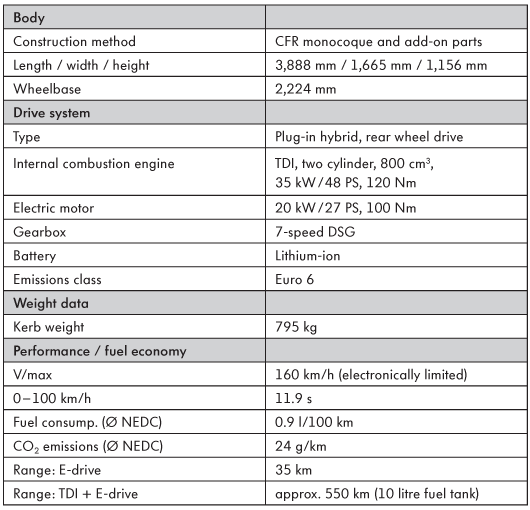
Downloads
- Volkswagen XL1 concept – detailed release (120kb PDF)
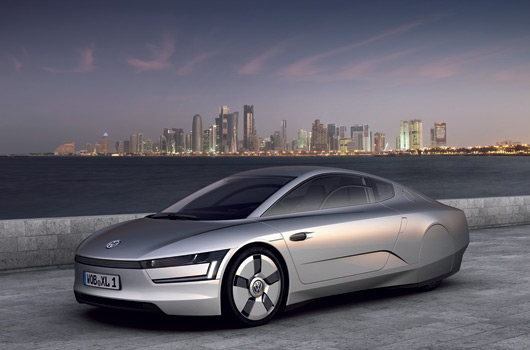
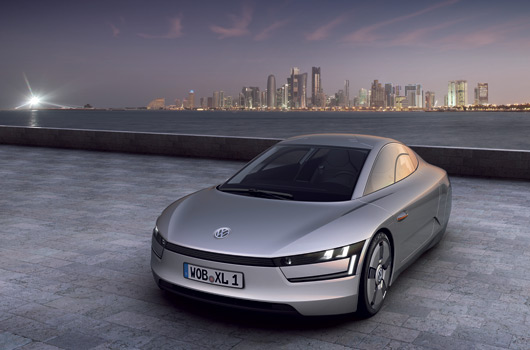
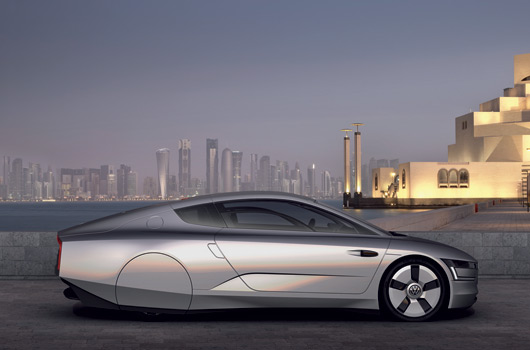
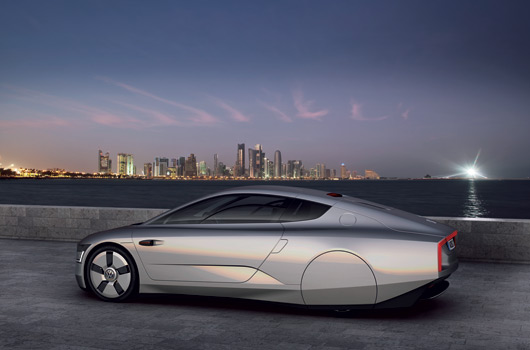
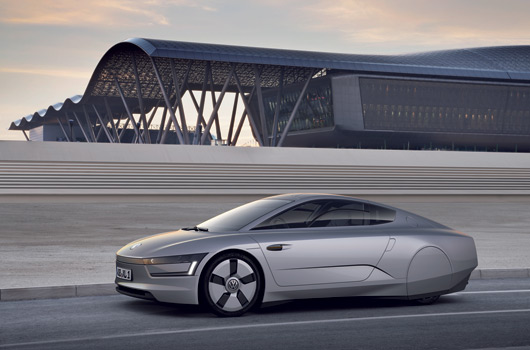
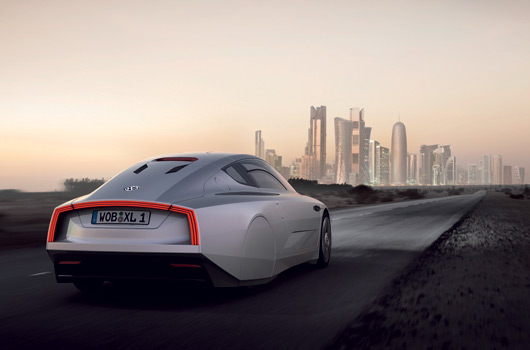
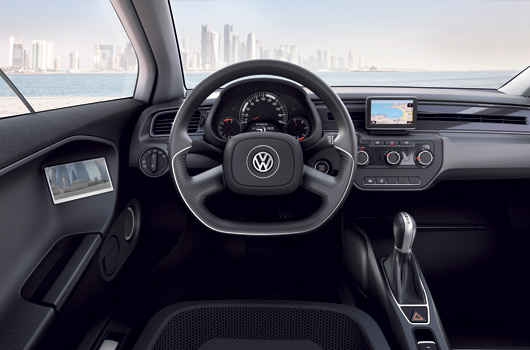
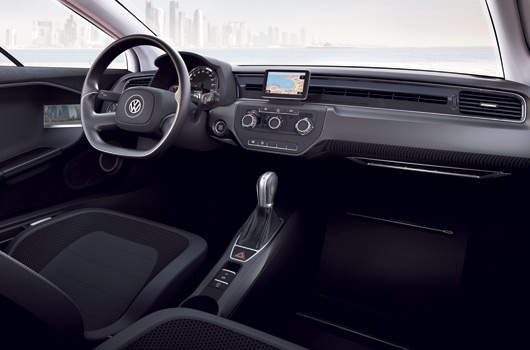
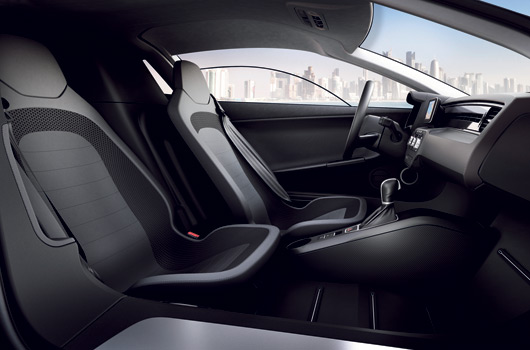
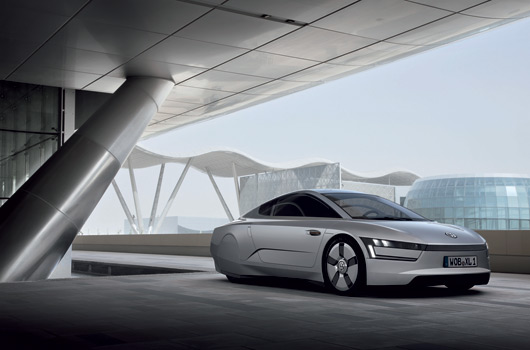
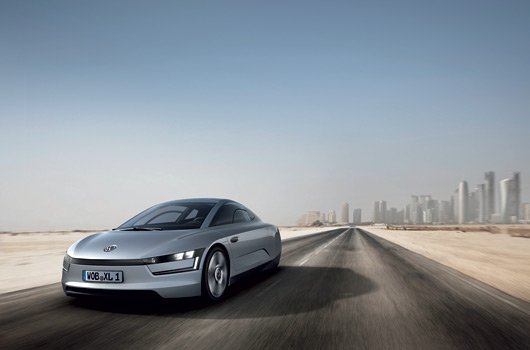
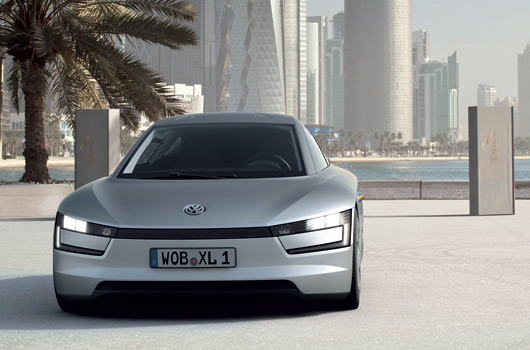
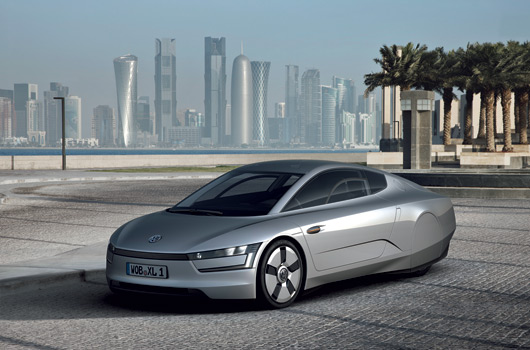
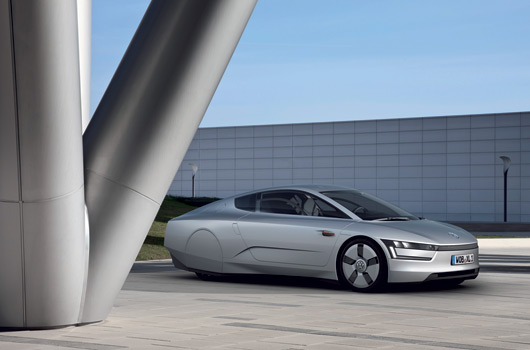
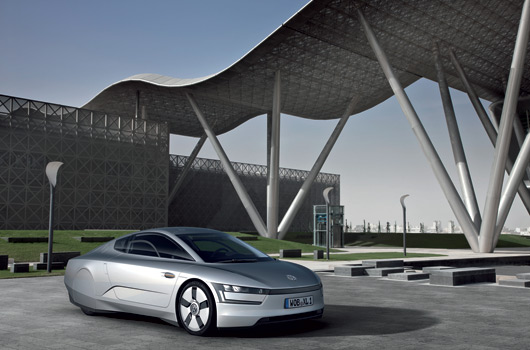
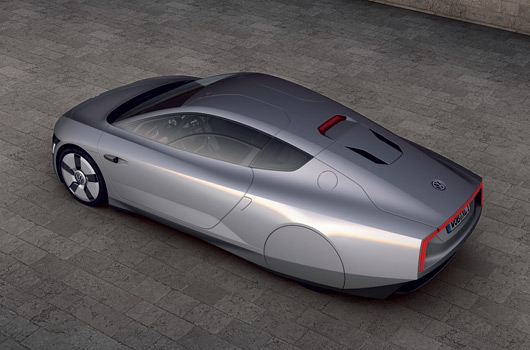
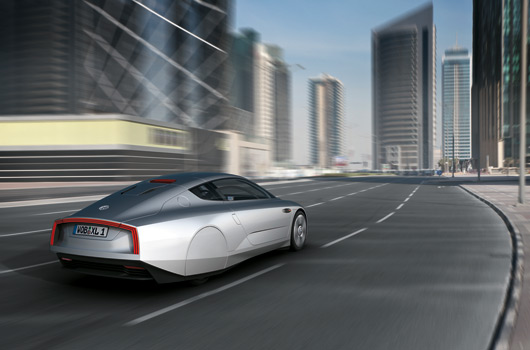
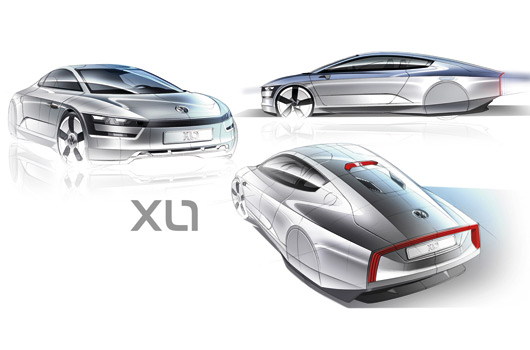
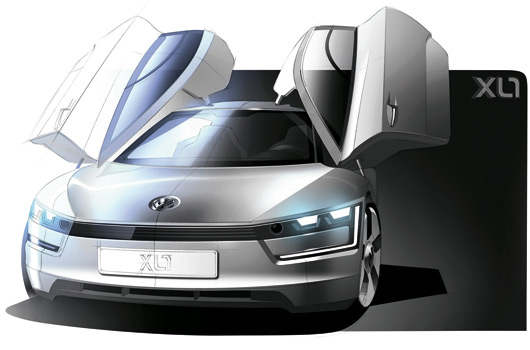
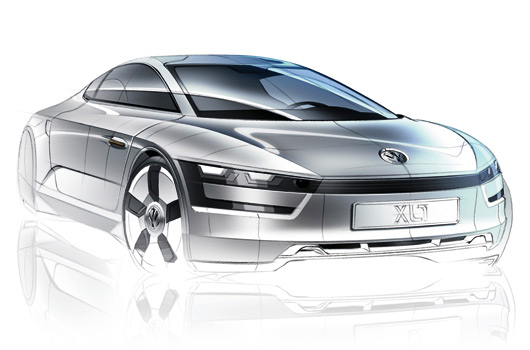
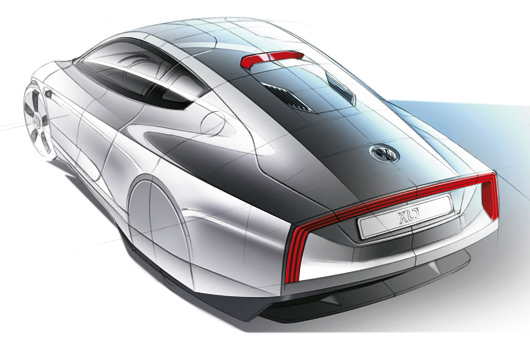
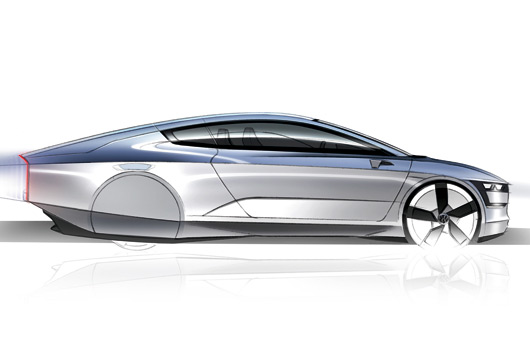
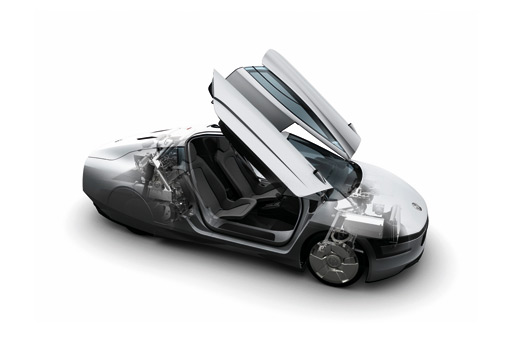
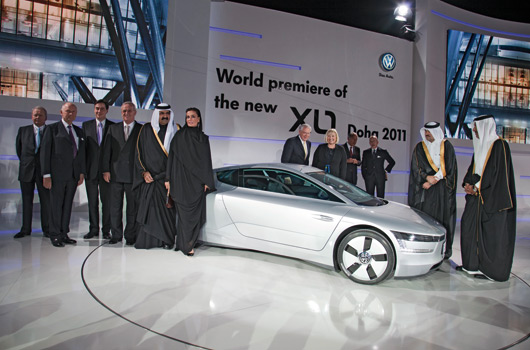
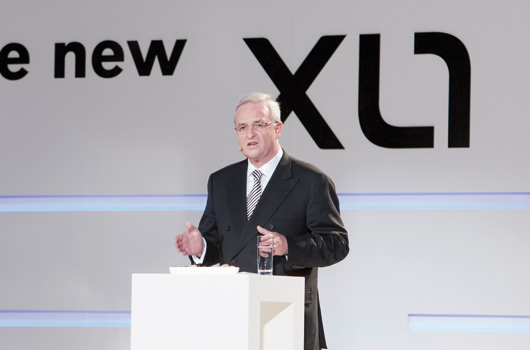
5 replies on “Qatar 2011: Volkswagen XL1 concept”
[…] to German publication Automobilwoche Volkswagen chief Dr Martin Winterkorn has confirmed the diesel-electric hybrid XL1, revealed at the Qatar Motor Show earlier this week, will be built. It’s due in a couple of […]
[…] drawings of what they call the ‘urban concept’. Basically they’ve taken the Volkswagen XL1 and given it a personality. It looks pretty cool too, don’t you […]
[…] Volkswagen stellt seriennahes 1-Liter-Auto vor und ausmotive.com: Qatar 2011: Volkswagen XL1 concept bringen große Bilder des […]
Great article – love the futuristic design, and Doha makes a great backdrop. Can’t help but think how much cheaper they would be if they used aluminium instead of carbon fibre. Still, I want one! Imagine, Sydney to Perth on less than 40 litres of petrol.
[…] the concept for the XL1 was first seen more two years ago. And now that it’s here Volkswagen will be making just 250 […]